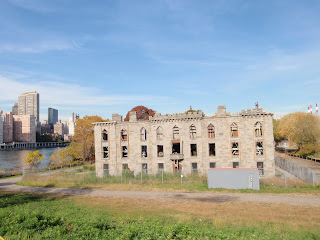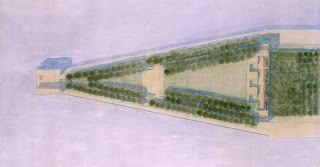F-Stop: Unraveling Roosevelt Island's Past and Present-Future
(SW Seawall Edge, Roosevelt Island)
Arriving at the proverbial 'fork in the road' I opt for the overhead route (I caught the F-train back to the City) to Roosevelt Island via the tram - feeling a little nostalgic about my many ascents up Grouse Mountain back home. This trip was over quicker than it began. No sooner have I risen into the canopy that is Manhattan's east side, we are crossing the great divide that is the east river. Descending upon this island of historical proportions one is taken by the visual progression of built history from Lighthouse Park to Southpoint. A clash of architectural styles that are clearly representative of the islands social and functional past and present, I naturally move toward the comfortable and familiar edge of the seawall. Unlike Vancouver where one is drawn to the edge for a regenerative glimpse of the mountains, it is the surrounding vertical builtscape of Manhattan that inspires here. The inner workings of Roosevelt Island can best be described as banal form mindlessly following function. The in-between experience has been all but forgotten in order to accommodate the loading and unloading of goods and services. Uninviting, cold, and confusing, much of the interstitial spaces that exist here are to be simply avoided - "step back - there's nothing to see here".
Neglected monuments, contemporary interventions, and ambiguous breaks in the flow of traffic around the perimeter seawall collide to become haphazard "points of interest". The meat of the island, I eventually uncover, lies due souh of the Queensborough bridge. Here, the historic smallpox hospital and it's environs lie dormant, eerily suggesting a history that is begging for resurgence and recognition. As I cicumnavigate the islands southernmost tip I am drawn to the power of it's presence within the greater cityscape. Views abound as the grade embodies a 'natural' cant from north to south - a seemingly obvious fit for an amphitheater, not dissimilar to the views from the Times Square stairs atop the TKTS booth.
(Smallpox Hospital, Roosevelt Island)
(Contemporized Site Plan Rendering, Author Unknown)
(Site Plan Rendering, L. Kahn)
(On-site mockups of "The Room's" stone - I think. "What happened to our view?")
(Site Model, L. Kahn)







